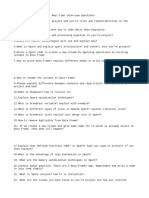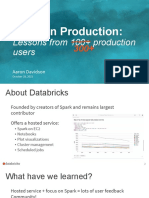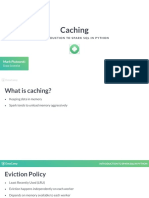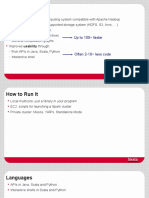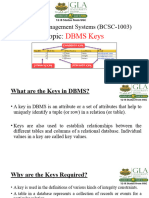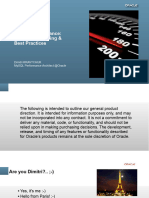0% found this document useful (0 votes)
105 views5 pagesPyspark 4
The document contains a comprehensive list of interview questions related to PySpark, covering various topics such as Spark architecture, performance optimization, real-world scenarios, DataFrame and RDD operations, streaming, machine learning, deployment, integration, and personal experience. Each section includes detailed questions aimed at assessing a candidate's knowledge and practical experience with PySpark and its ecosystem. The questions are designed to evaluate both theoretical understanding and practical skills in handling data processing tasks using PySpark.
Uploaded by
Monojit SahaCopyright
© © All Rights Reserved
We take content rights seriously. If you suspect this is your content, claim it here.
Available Formats
Download as PDF, TXT or read online on Scribd
0% found this document useful (0 votes)
105 views5 pagesPyspark 4
The document contains a comprehensive list of interview questions related to PySpark, covering various topics such as Spark architecture, performance optimization, real-world scenarios, DataFrame and RDD operations, streaming, machine learning, deployment, integration, and personal experience. Each section includes detailed questions aimed at assessing a candidate's knowledge and practical experience with PySpark and its ecosystem. The questions are designed to evaluate both theoretical understanding and practical skills in handling data processing tasks using PySpark.
Uploaded by
Monojit SahaCopyright
© © All Rights Reserved
We take content rights seriously. If you suspect this is your content, claim it here.
Available Formats
Download as PDF, TXT or read online on Scribd
/ 5








